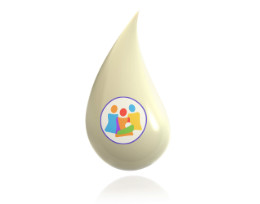Positioning to Help Your Baby Latch Well


Infants have instincts that enable them latch to the breast and feed. However, this does not mean that all babies will latch well.
Positioning in a way that your baby is comfortable will help your baby latch. You may need to experiment to see which positions work the best for you and your baby. Here are a few hints that may help no matter what position is used:
- Babies latch better when calm. Put your baby to your breast when the baby is showing feeding cues, before the baby is overly hungry. Early feeding cues include the baby bringing their hands to their mouths, rooting, sticking their tongue out, and seeming restless. Once the baby is crying due to being overly hungry, latch can be more difficult. If the baby is at that point, place the baby skin to skin, or allow the baby to suck on your finger to calm the baby before latching.
- Support your baby’s back (spine), neck, and the base of the head behind the ears rather than the back of baby’s head, as you can see in the picture above. Babies have a hard time latching when pressure on the back of the head pushes the baby into the breast.
- Position baby so that the chin touches the breast first and the nipple touches the upper lip. This is called asymmetric latch. This helps the baby open wide, as you can see in the picture above. When the baby’s mouth is open wide, the baby will latch deeply, which prevents nipple trauma, and ensures that the baby can remove milk well.
| Position | Tips on Positioning | When to Try This |
| Cradle Hold
|
|
|
|
Cross Cradle Hold
|
|
|
|
Football, Clutch, or
|
|
Mom:
Baby:
|
|
Koala Hold or Australian Hold
|
|
Mom:
Baby:
|
|
Side Lying
|
|
Mom:
|
|
Laid back Positioning with Self Attachment
|
|
Mom:
Baby:
|
Believe it Will Happen!
Babies tend to improve their latch skills as they mature and grow. Some babies will latch better when you try a different position. Other babies may simply need more time. Not all babies begin crawling or walking at the same age. As such, not all babies are skillful and effective feeders at the breast at the time of birth.
If your baby is not latching well, find lactation help!
In the meantime, you need to do 2 things- Remove milk from your breasts regularly to maintain milk production, and feed the milk to your baby (add donor milk or formula if you are not able to express enough for your baby). You can use a pump or hand express to remove milk, aiming for milk removal at least every 3 hours during the day with no more than a 5 hour break overnight.









